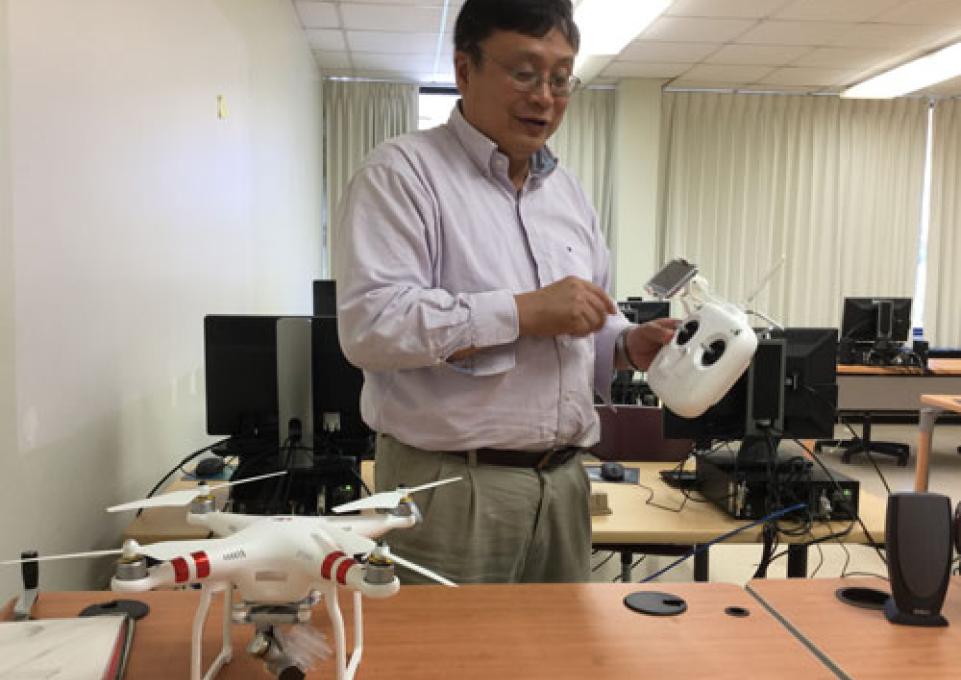
Is it practical to use drones to detect invasive aquatic plants?
To answer that question, Tao Tang, professor of geography and planning, is leading a search for water chestnuts in Tonawanda Creek and the Erie Canal. The project, funded by the Great Lakes Research Consortium, is designed as a “proof of concept” investigation. If it’s successful, such unmanned aerial vehicles (UAVs), commonly known as drones, may be used to find invasive plants in and along New York State’s waterways.
“My research interest is integrating remote sensing and geographic information systems,” said Tang. “Remote sensing used to be limited to using planes and helicopters to take aerial photographs. Then satellite images entered the picture. When UAVs came on the scene, we started to think about ways we could integrate them into classes.” Christopher Pennuto, professor of biology and research scientist with the Great Lakes Center, is co-PI on the project.
“Dr. Pennuto suggested mapping invasive species with the UAV,” said Tang. “We decided to look for water chestnut, because it is one of the worst invasive plants in New York State’s waterways. It occupies the water surface of slow-moving rivers and shallow lakes and ponds.” Tang said that several government agencies are interested in controlling the spread of water chestnut.
With students from his graduate and undergraduate classes in remote sensing, Tang is using boats from the Great Lakes Center Field Station to take images of 100 sections of shoreline, each 500 meters long. “We will operate the UAV from the boat,” said Tang, “so we will be able to perform visual observations too.”
The UAV records GPS data with each image. In addition, Stephen Vermette, professor of geography and planning, provided a small meter that can measure temperature and relative humidity. “By putting this device on the UAV,” said Tang, “we can collect more data that might be useful in evaluating the conditions where invasive species grow strongly or encounter difficulties.”
